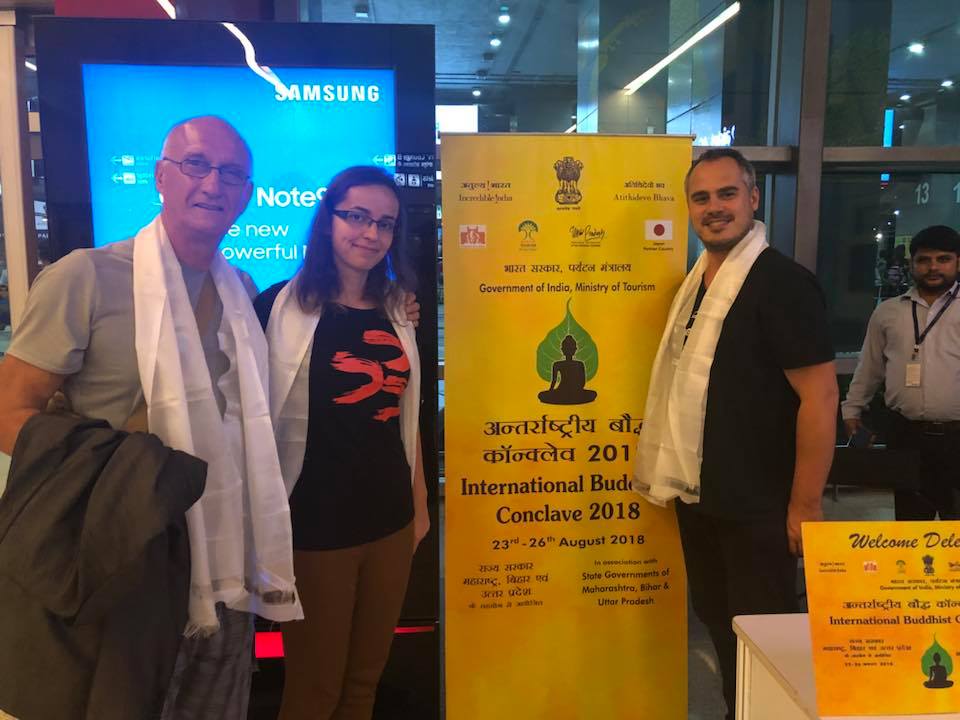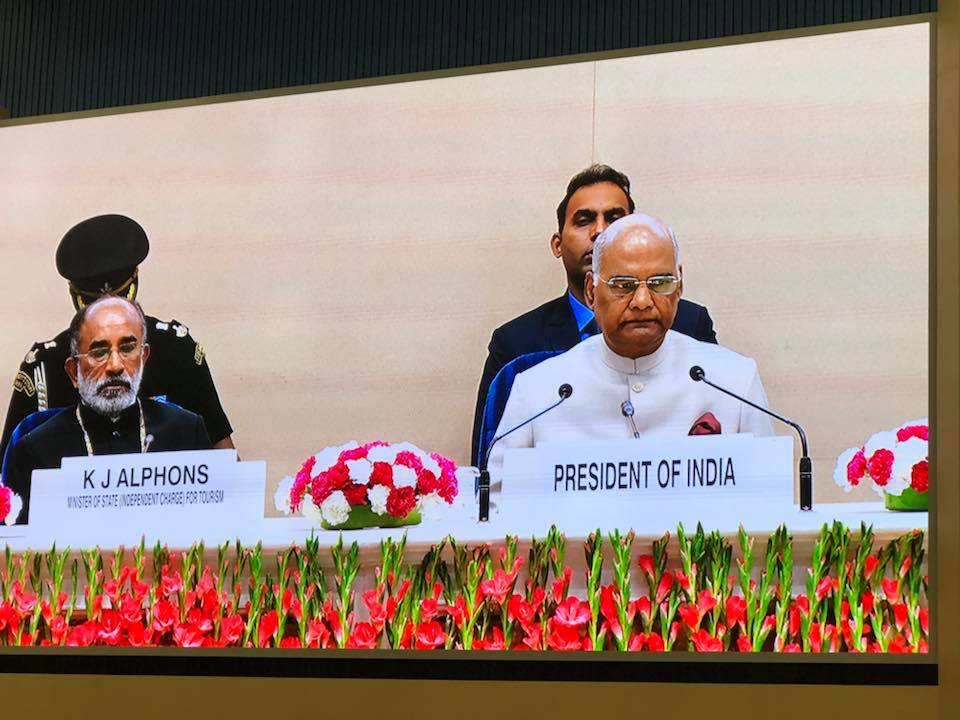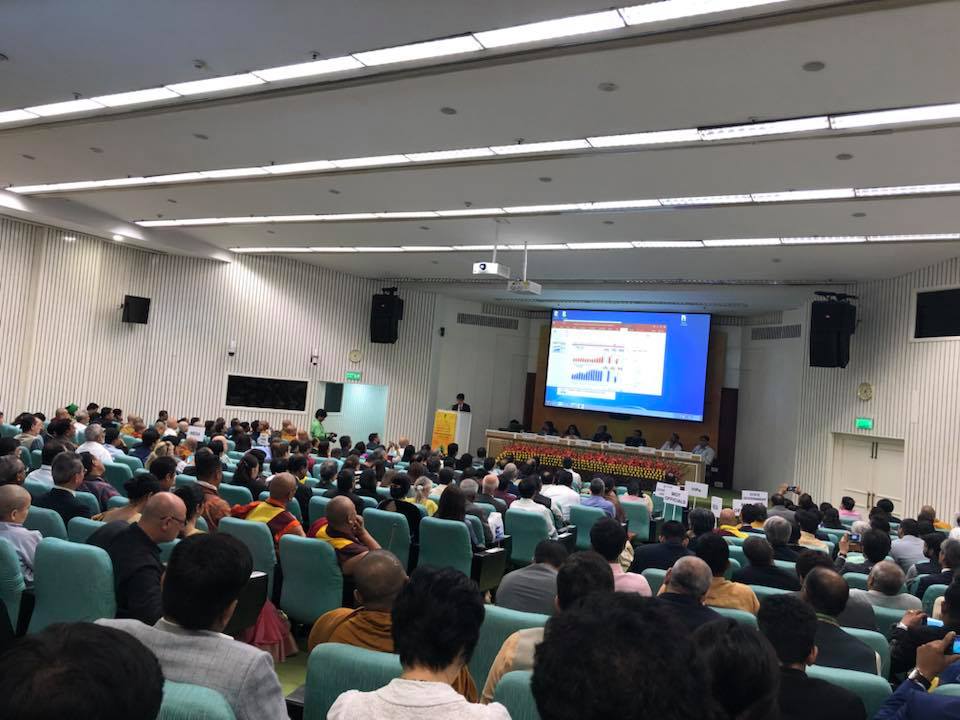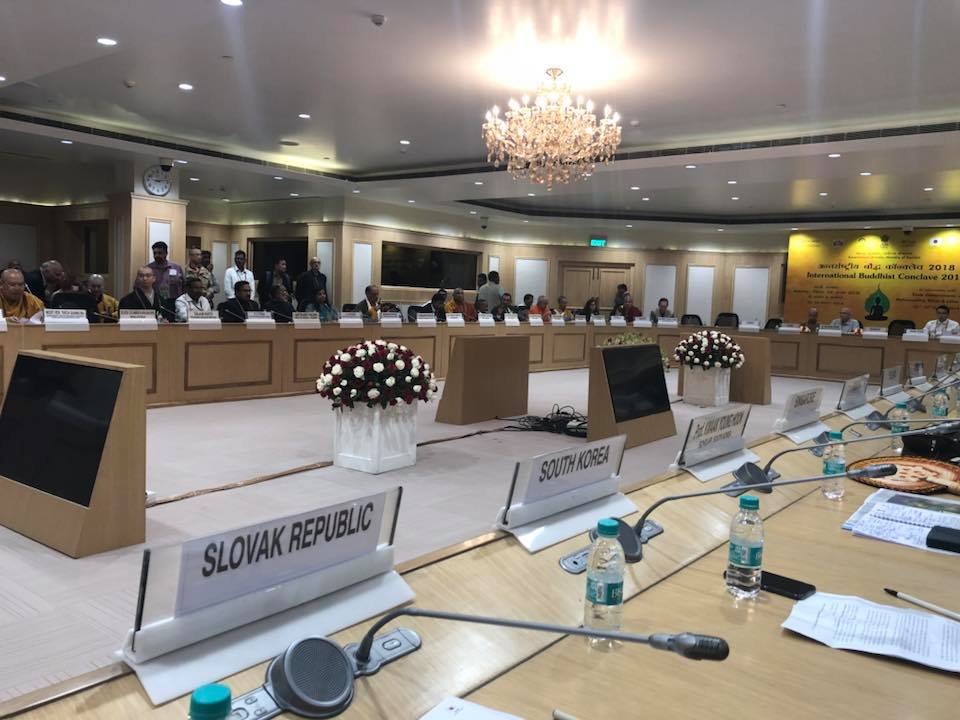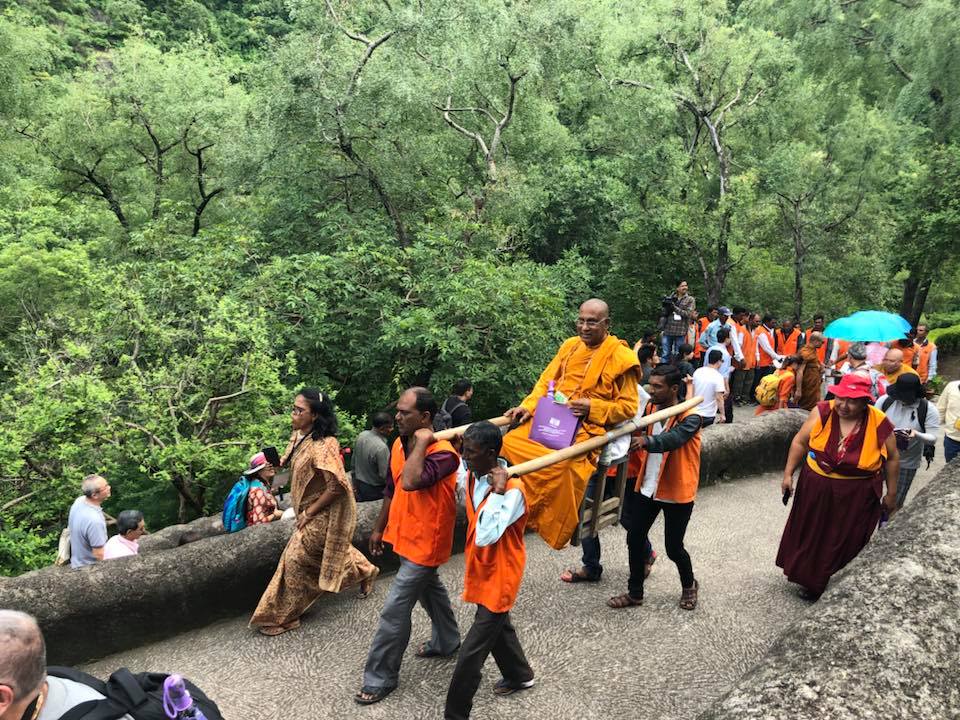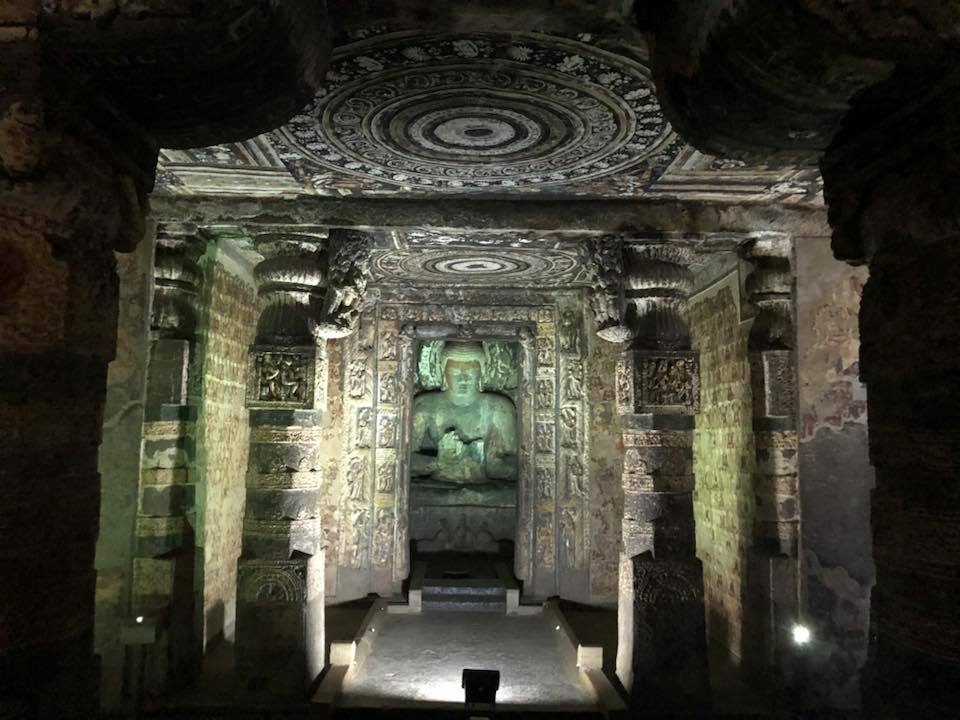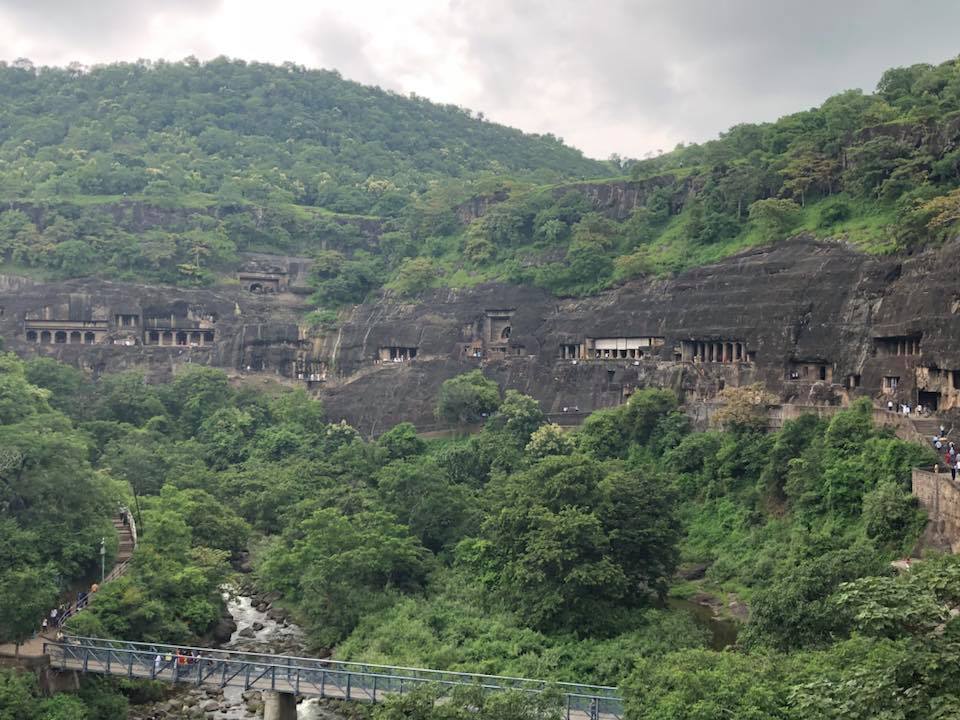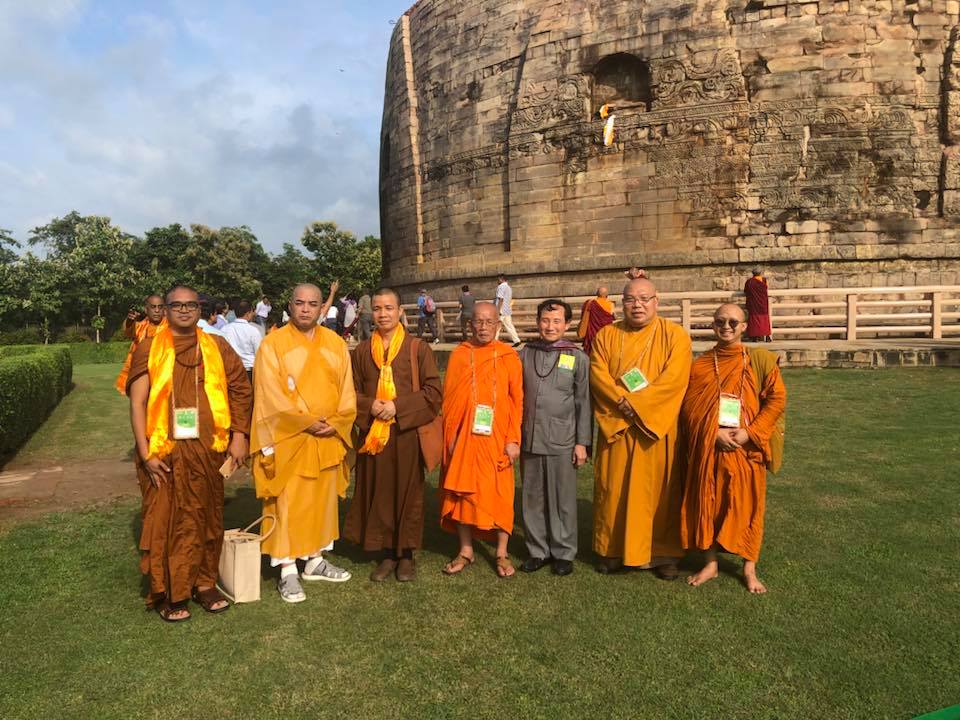We have been privileged to be invited to the 6th International Buddhist Conclave being organized by the Ministry of Tourism of India in association with the State Governments of Maharashtra, Uttar Pradesh and Bihar with site visits to Ajanta Caves, Bodhgaya, Nalanda, Rajgir and Sarnath / Varanasi from August 22-26, 2018. Alexander Horvath, VP of Indian Chamber of Commerce and Culture in the Slovak Republic was attending the congress as well as different pilgrimage sites associated with Siddhartha Gautama later known as Buddha. From Slovakia Jozef Banáš, famous Slovak writer and Katarina Mičová, BUBO travel agency were part of the Slovak delegation.
It´s been more then 2500 years since the birth of Buddha and compared to other religions a lot of evidence has been discovered and kept until now. From his birthplace Lamabani (current area in Nepal), to his first Enlightenment under the Bodhi tree in Bodhgaya near the city Gaya, to his teachings and study in ancient University in Nalanda to his first sermon led for his followers in Sarnath temple close to Varanasi. The end of Buddha life was documented in city of Kushinagar where he entered mahaparinirvana. All these holy places are visited annually by millions of Buddhist monks and followers from around the world yet in India the traditional Buddhism ended with the Turkish raids in 11th century A.D. Today only 0,7% follows the teachings of Buddha in India as most of the religion was absorbed over the time by Hinduism.
The Buddhism is the fourth largest religion in the world with 8-10% followers of world’s population after Christianity (33%) and Islam (24%), Hinduism (15%) with biggest base in Cambodia, Thailand, Myanmar, Bhutan, China (including Tibet), Bharma, Sri Lanka, Japan and other east Asian countries. The purpose of the International Conclave was to inform the foreign delegation (250 participants from 33 countries) about Indian promotion of Buddhist sites as well as discuss the ongoing issues and troubles the Buddhist community is facing nowadays (in India and elsewhere).
Let’s start from the beginning...Delhi
After the inaugural session of honorable President of India, Mr. Ram Nath Kovind, the delegates could join various B2B, G2G and investors meetings including special session dedicated to Tour Operators. A special attention was given to the Panel discussion “Role of Living Buddhist Heritage in the contemporary society”. Delegates from each country raised their points and concerns how to support monasteries, preservation of ancient sites as well as financial concern of low tourism and pilgrimage. Delegates appreciated presentation from 7 partnering states from India and their Buddhist site discoveries: Andhra Pradesh, Arunachal Pradesh, Bihar, Gujarat, Madhya Predesh, Maharashtra, Sikkim.
Our “Search for Buddha” started in Delhi with visiting of ancient sites of Qutub Minar and Hamayun Tomb. Although not connected directly to Buddhism, delegates could understand the fusion of different religions in architecture from Islam, Hinduism and Christianity from 12th century A.D. and the importance of preservation of the sites for tourists. Many of the sites ended up in UNESCO World Heritage list.
The Qutub Minar was completed in the 12th century, as the India's tallest minaret. This ornate five-story tower rises more than 70 meters and is covered with intricate carvings featuring the history of Qutub along with inscriptions from the Koran.
The Humayun Tomb is set in a lovely, large square garden and is a lofty mausoleum constructed of white marble and red sandstone. It was designed as a prototype of the Taj Mahal in Agra and is an excellent example of Mughal architecture. Built in the mid-16th century by Haji Begum as a memorial to Humayun's senior widow, the tomb is surrounded by formal gardens and other tombs including Humayun's barber and the Tomb of Isa Khan, the architect of the Taj Mahal.
Aurangabad, state Maharashtra
The city is a tourism hub, surrounded by many historical monuments, including the Ajanta Caves and Ellora Caves, which are UNESCO World Heritage Sites, as well as BibiKa Maqbara and Panchakki. The Ajanta Caves are 30 (approximately) rock-cut Buddhist cave monuments which date from the 2nd century BCE to about 480 CE in Aurangabad district of Maharashtra state of India. The caves include paintings and rock-cut sculptures described as among the finest surviving examples of ancient Indian art, particularly expressive paintings that present emotion through gesture, pose and form. The caves were built in two phases, the first phase starting around the 2nd century B.C., while the second phase was built around 400–650 A.D. The day was closed by cultural program performance by local folk dancers hosted by Government of Maharashtra.
Gaya, State Bihar
Our first stop was city Rajgir - the former capital city of state Magadha in 5th BC (now Bihar) which later evolved to strong Mauryan Empire. King Bimbisara proposed half kingdom to Siddhartha for the TRUTH. During this time Buddha performed his Second wheel of law. Later we moved to the Bamboo park Veluvana in Mahavihara which was given to Buddha by the King Bimbisara to perform his teachings and created Monastery. Walking in the same park where Buddha was walking 2500 years ago and thinking about the Wisdom gives you definitely goose bumps.
The next morning delegates moved to the most sacred place of all Buddhist sites - The Bodhgaya in Mahabodhi Temple Complex. It is THE religious site and place of where Gautama Buddha is said to have obtained Enlightenment (Pali: bodhi) under what became known as the Bodhi Tree. We had the opportunity to meditate under the Bodhi Tree. Did I get enlightened? Perhaps just a little. Step by step.
Varanasi, State Uttar Pradesh
Varanasi is the oldest documented living city dated 2,500 B.C. founded by Lord Shiva one of the three Gods (Brahma, Shiva, Vishnu). Unfortunately, we didn’t get to see Ganga and the cremation ceremony (Hindus religion)
Last but not least was the Sarnath - Buddha’s first sermon place. Tired after the week of travel, we laid down on the grass and started to absorb the sun energy while watching Buddhist monks performed their prayers.
I must say, on behalf of all international delegates, that the organization of entire Conclave was performed on exceptional high level of professionality. From smooth hotel reservations, coach transfers, police escorts to educated and very nice guides and cultural programs in the evening. Thanks to the Ministry of Tourism India for Conducting this Conclave and best of luck for next events. This was perfect way to spread the word, educate, share and collaborate on international level.
Alexander Horváth
Vice President & Chief Operating Officer INDCHAM SR
Board of Directors, Statutory Director
Pictures from the mission
